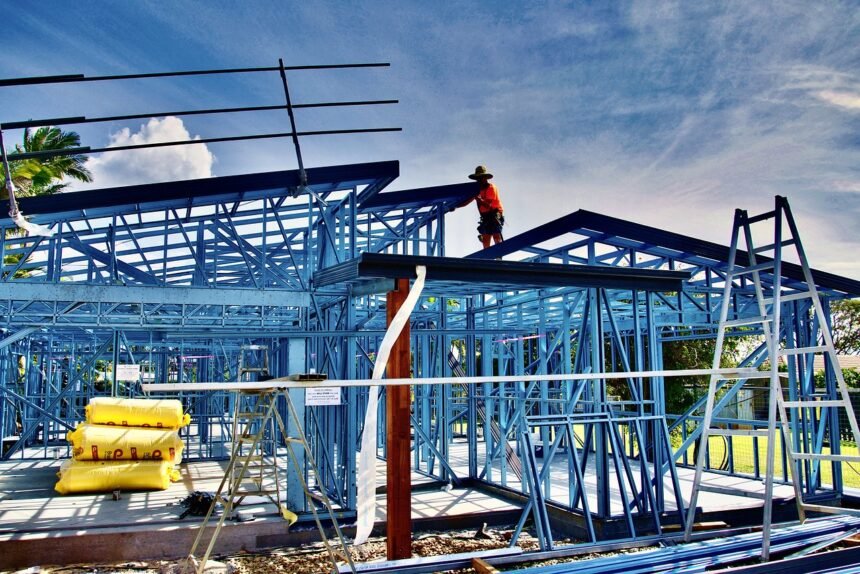Accurate cost estimation is the spine of each hit production assignment. Whether you’re handling small residential paintings or big business ventures, getting the numbers right from the start could make or ruin your bottom line. Today’s marketplace has a huge variety of procedures for estimating expenses, and lots of Construction Estimating Companies have set new industry requirements with modern techniques. However, expertise in the center techniques can empower contractors to make better selections and ensure task success.
Detailed Quantity Takeoff
One of the most common estimation strategies is the distinctive amount takeoff. This entails measuring every cloth and resource needed for an undertaking. Estimators calculate quantities from blueprints and production drawings, which can then be priced using modern-day marketplace charges. This approach works well for projects where designated plans are available and present a clear, itemized cost projection. It calls for time and precision; however, the accuracy can help shop huge quantities by avoiding overordering or shortages.
Unit Cost Estimating
Unit cost estimating is widely used due to its simplicity and reliability, in particular for repetitive obligations or trendy substances. In this technique, contractors assign a cost in step with the unit, like rectangular foot, cubic yard, or linear foot, primarily based on ancient records or posted fee books. Multiplying the unit fee by the total required quantity gives a brief and frequently dependable estimate. It’s mainly useful for contractors who frequently deal with similar sorts of projects, permitting them to streamline the estimation system.
Assembly Estimating
Assembly estimating, additionally called machine estimating, goes a step beyond unit costing. Instead of pricing unmarried gadgets, it costs a group of associated components as a machine. For example, a wall meeting would consist of framing, drywall, insulation, and finishes. This method reduces the chance of lacking components in the estimate and allows contractors to estimate in terms of finished sections in place of person components. It’s a sensible approach for medium- to large-scale initiatives with repeating assemblies.
Parametric Estimating
Parametric estimating makes use of statistical models and historical records to forecast fees primarily based on assignment parameters. For instance, if past tasks display that a 10,000-rectangular-foot construction costs $150 per square foot, the parametric estimate for the same-sized construction would be around $1.5 million. This method is ideal during the conceptual phase while particular designs aren’t to be had. It presents a ballpark estimate based on measurable parameters and industry benchmarks. This technique additionally enhances early budgeting wishes, particularly for owners and developers in search of initial fee projections.
Square Foot or Cubic Foot Estimating
Primarily used for conceptual budgeting, this approach bases the estimate on the building’s ordinary length, either rectangular footage or cubic footage. While it lacks the precision of certain quantity takeoffs, it’s valuable for early-section fee discussions or feasibility studies. It’s brief, requires minimum information, and enables setting initial expectancies with clients. However, this technique should be delicate with greater distinctive techniques as the assignment design progresses.
Subcontractor Quotations
For specialized responsibilities, many contractors depend on subcontractor quotations. This technique includes soliciting designated fee proposals from subcontractors who will perform the actual work. Subcontractor prices are important for regions that require precise information or licensing, like mechanical, plumbing, or Electrical Estimating duties. By obtaining competitive bids, fashionable contractors can ensure marketplace-based pricing and decrease the threat associated with specialized work. It’s additionally a realistic manner to offload some estimation duty onto trusted change partners.
Historical Cost Data Analysis
This technique involves reviewing statistics from past tasks with comparable scopes, locations, and materials. By analyzing what worked—or didn’t—contractors can expect prices more effectively. Historical fee statistics give insights into hard work productivity, clothing expenses, and undertaking timelines. However, it’s essential to modify for inflation, marketplace conditions, and regional price differences. This approach works with high quality while mixed with other estimation techniques in place of being used on its own.
Cost Modelling with Software Tools
With the rise of digital creation gear, many contractors now depend on specialized software programs to streamline and beautify their estimating procedures. Estimating software enables reducing manual errors, allows for speedy adjustments, and may generate reports and value breakdowns within minutes. Advanced gear can integrate with BIM (Building Information Modelling) for even extra accuracy. Using such gear additionally helps when working with a Lumber Estimator, as software can calculate precise portions of wood required primarily based on special assignment designs.
Conclusion
In the competitive international construction industry, knowing various estimation methods offers contractors a strategic gain. Each approach has its strengths, and regularly, a mixture of numerous tactics leads to the maximum correct effects. Whether leveraging the information of creation estimating organizations, relying on particular electric estimating techniques, or using an estimator device for material takeoffs, knowing which method suits your undertaking’s needs will let you deliver on budget and on time.
Also Read: Reducing Reporting Errors With AI in Clinical Quality Measures CQM







